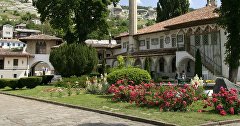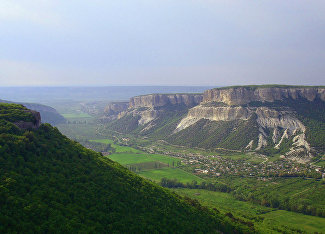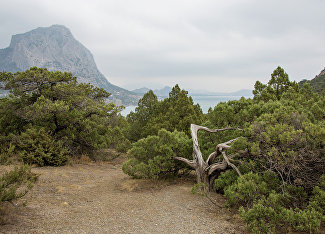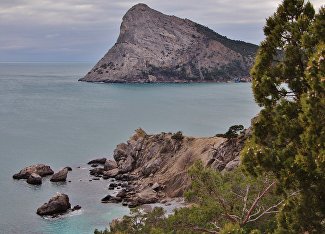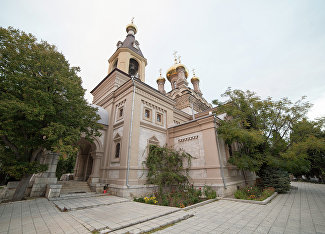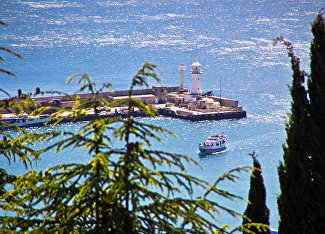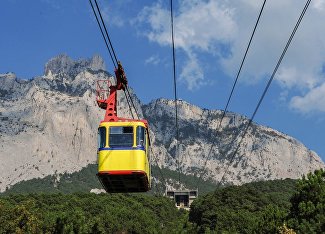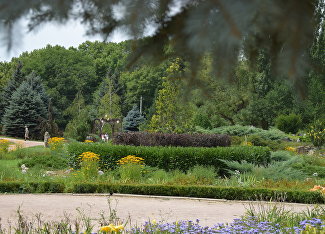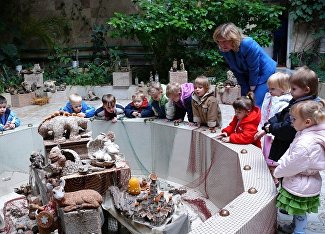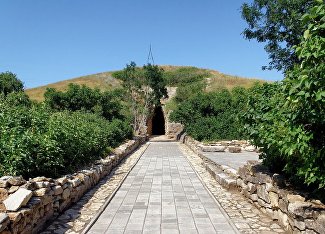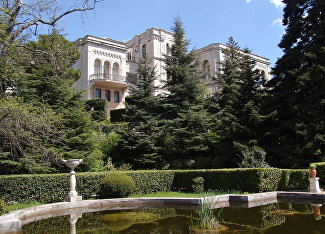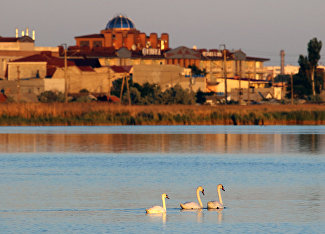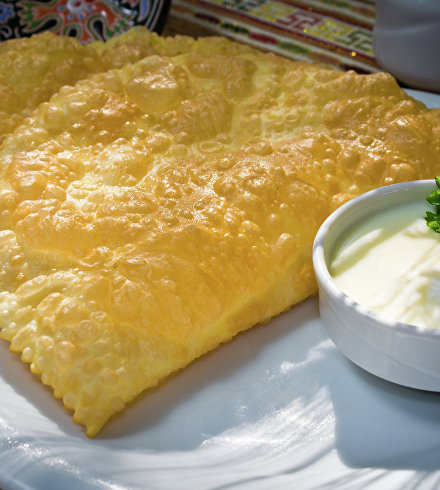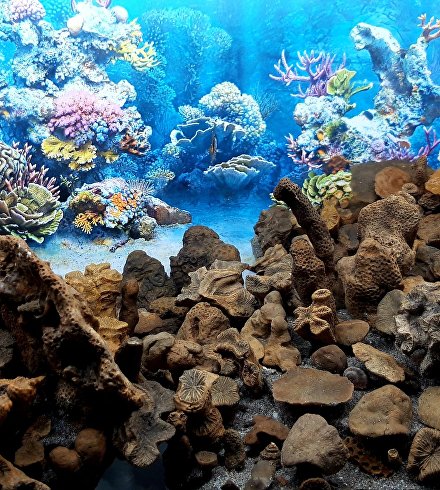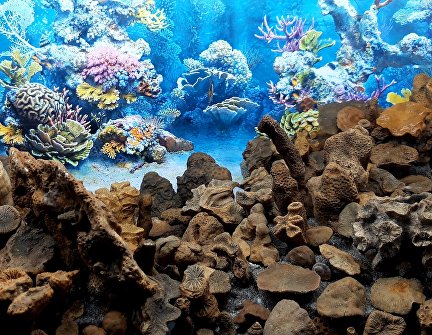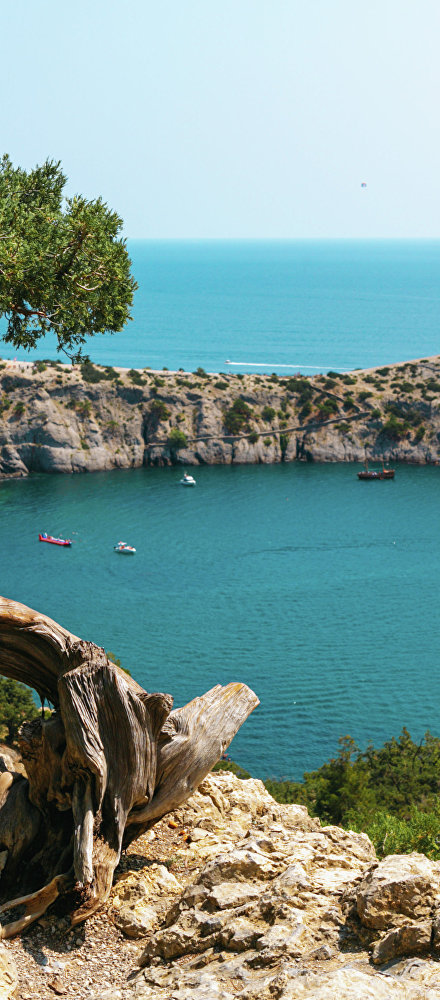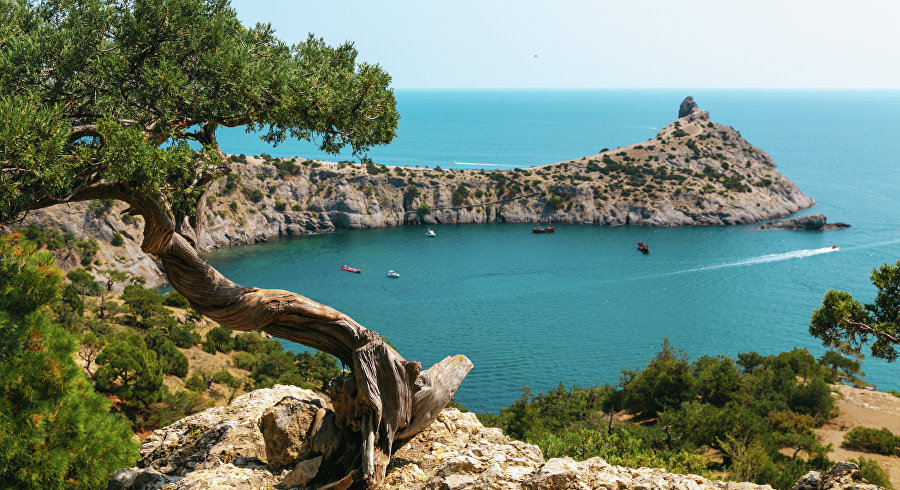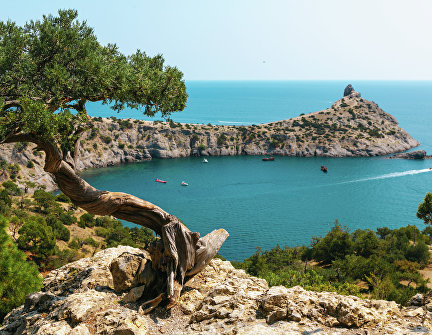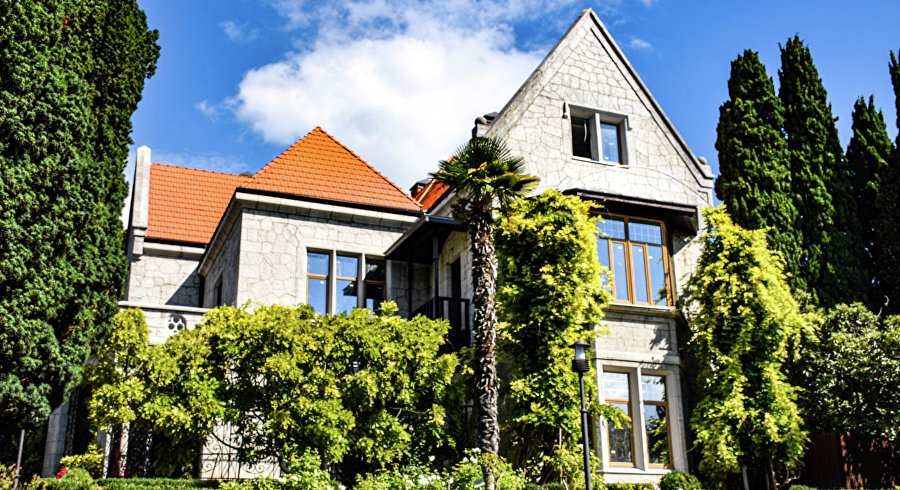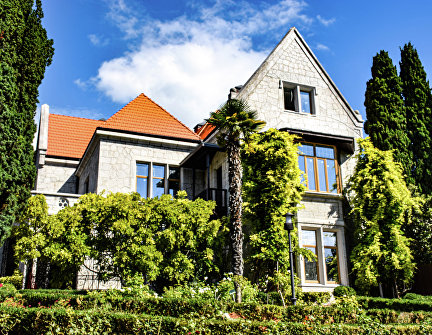It is located in the foothills, 30 km southwest of Simferopol. It has no beaches; travellers come to Bakhchisarai to see the numerous architectural and historical landmarks, enjoy its unique atmosphere and taste the local cuisine. The Bakhchisarai region is a destination for pilgrims, extreme sports enthusiasts and those who enjoy trekking and eco-tourism. Local mountains and cliffs hide numerous ancient fortresses, cave monasteries, mountain rivers and many other fascinating landmarks.
Name
In Crimean Tatar, Bakhchisarai stands for Garden Palace (bagça — garden, saray — palace).
Geography and climate
The Bakhchisarai region is characterised by its forests, low mountains and rocks that take on unique shapes known as cuestas, which make this area perfect for trekking. Almost every village is located in a valley of a mountain river. The combination of environmental factors makes local medicinal plants especially valuable.
The climate is moderate continental. Winters are rarely cold, with temperatures hitting the lowest point of —10˚C once in five years.
Summers are hot, with an average of 22˚C in July. The absolute maximum in summer is 40˚C. To cool down in summer, you can can go for a walk in the forest or take a dip in a mountain river, where water stays refreshingly cool all year round. For example, the temperature in the Auzun Uzen River in the Grand Canyon of Crimea never rises above 10˚C even in August. Its water is believed to have rejuvenating properties.
Things to see
- Bakhchisarai's main landmark is the Khan's Palace. During a guided or personal tour of this ancient residence, you will see a harem building, ancient baths, a garden and meeting halls. You can pose for a photo next to the legendary Fountain of Tears. Today, the Khan's Palace archives have over 100,000 exhibits, including fabrics, ornate metal dinnerware, wooden and ceramic goods as well as rare books.
- The Salachik historical quarter has the ancient foundations of the Khanane capital, a mosque and Zincirli Madrasa, built on the order of Khan Mengli Giray in 1500. The building houses a museum full of archeological finds discovered in the area.
- House Museum of Ismail Gasprinsky, the great educator of Russian Muslim communities, writer, teacher and publisher of the first Russian newspaper in Turkic.
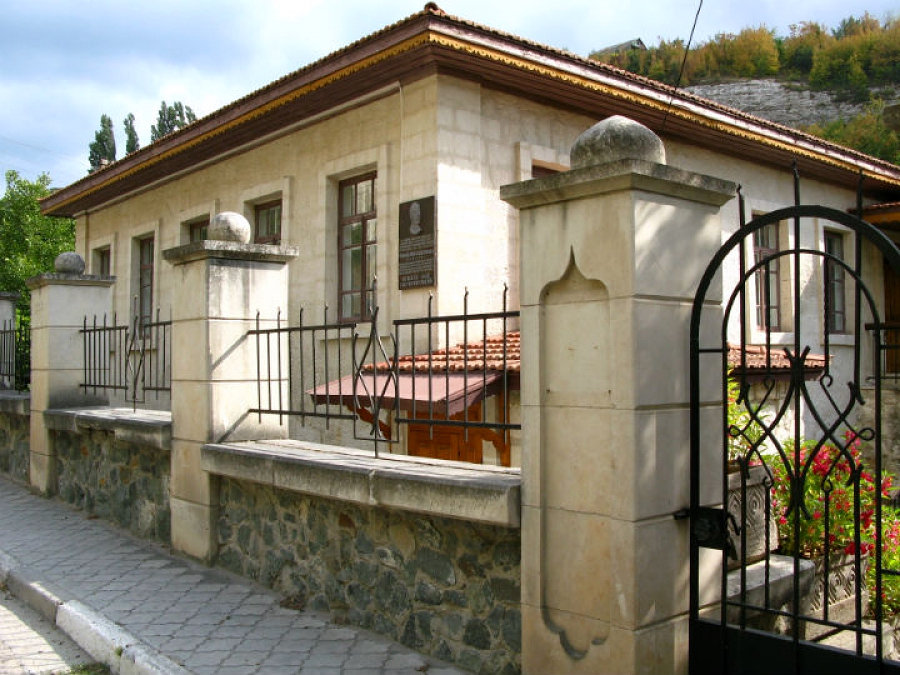
- The medieval cave city of Chufut-Kale is located 558 m above sea level. This 46-hectare area is full of the foundations and well-preserved buildings. The fortress was built by the Alans in the 6th-7th centuries. In the 15th century, it became the first capital of the Crimean Khanate. Once the construction of the palace in Salachik was completed, almost all of its Muslim residents moved away, leaving the city to the Karaites, the Crimean Turkic-speaking adherents of Judaism. At the foot of the cliff where the city is located, you can find Balta Tiymez, the largest Karaite cemetery in the world. Its oldest graves date back to the 13th century.
- The Assumption Cave Monastery in Bakhchysarai is one of the largest and most important monasteries in the region. It is said to have been founded by Byzantine monks in the 8th century.
- Mangup Kale is a medieval fortress city. Its first fortifications were built by the Crimean Goths and date back to the 5th century. Its artificial caves, basilica foundations and ruins of a citadel and defensive walls are known to be remnants of the Byzantine Principality of Theodoro (13th — mid-15th century).See also
Belbek Canyon - The list of other cave cities and fortresses to be found around Bakhchisarai includes Eski Kermen, Tepe Kermen, Syuyren Fortress and Bakla.
- Another place of interest is the Crimean Astrophysical Observatory in Nauchny. In the past, access to this mountainous town was restricted because of a research centre built here in 1945. Now visitors can examine the observatory's telescopes and go for a walk around the town that was built for scientists amidst Crimean forests.
- The Grand Canyon of Crimea is located in the foothills of Ai-Petri. This is a place of unique vegetation and mountain springs that form rivers and pools. The legend says that its waters have a rejuvenating effect.
Hotels and more
There are no major five-star hotels in Bakhchisarai or its environs. This is a region for eco-tourism, and it abounds in small hotels and hostels, mountain shelters, camping sites and yoga retreats. It is the best place to get to know Crimean Tatar cuisine, since it is widely served at local restaurants and small roadside cafes alike.
The region has a developed outdoor recreation infrastructure, offering horseback riding, rock climbing, trekking, quad bike riding, and much more.
Only Peschanoye has access to the sea. The rest of the area had abundant mountain rivers.
How to get there
The city is located 260 km from the Crimean Bridge, 30 km from Simferopol, the capital of the Republic of Crimea, and 57 km from Sevastopol.
You can get to Bakhchisarai from the Simferopol Airport by bus; the trip will take one hour.
The Simferopol railway station has commuter trains to Bakhchisarai. The journey time is about 40-50 minutes.
Bakhchisarai is about one hour drive away from Sevastopol's railway and bus stations.
There are buses circulating between the region's towns.

